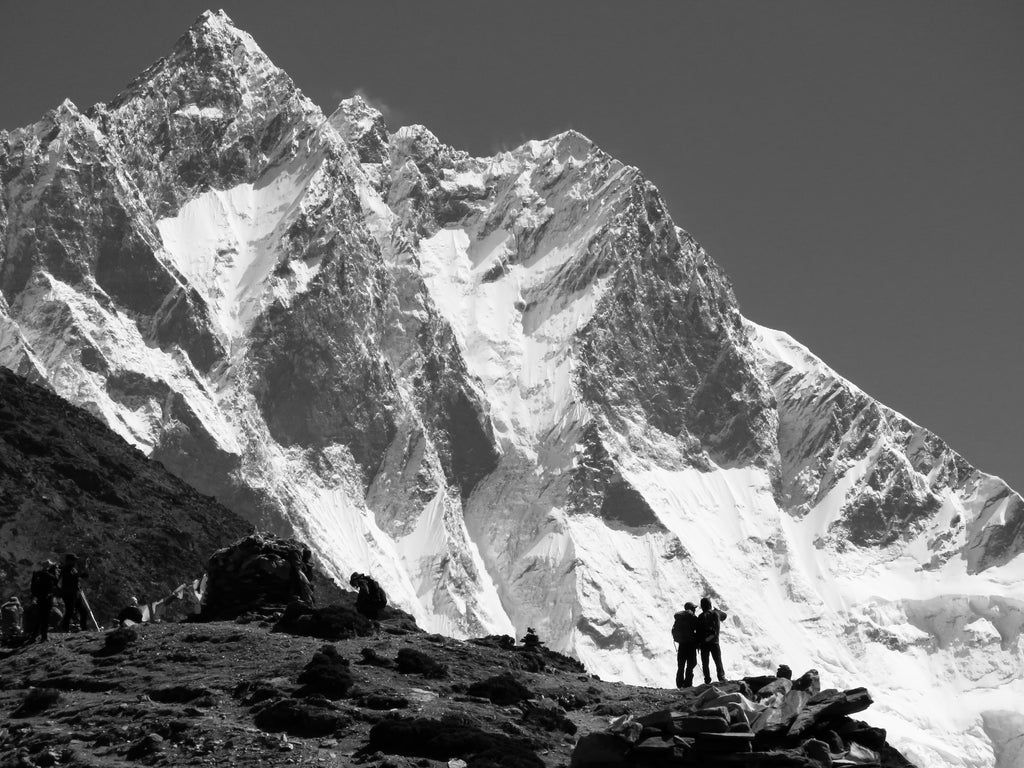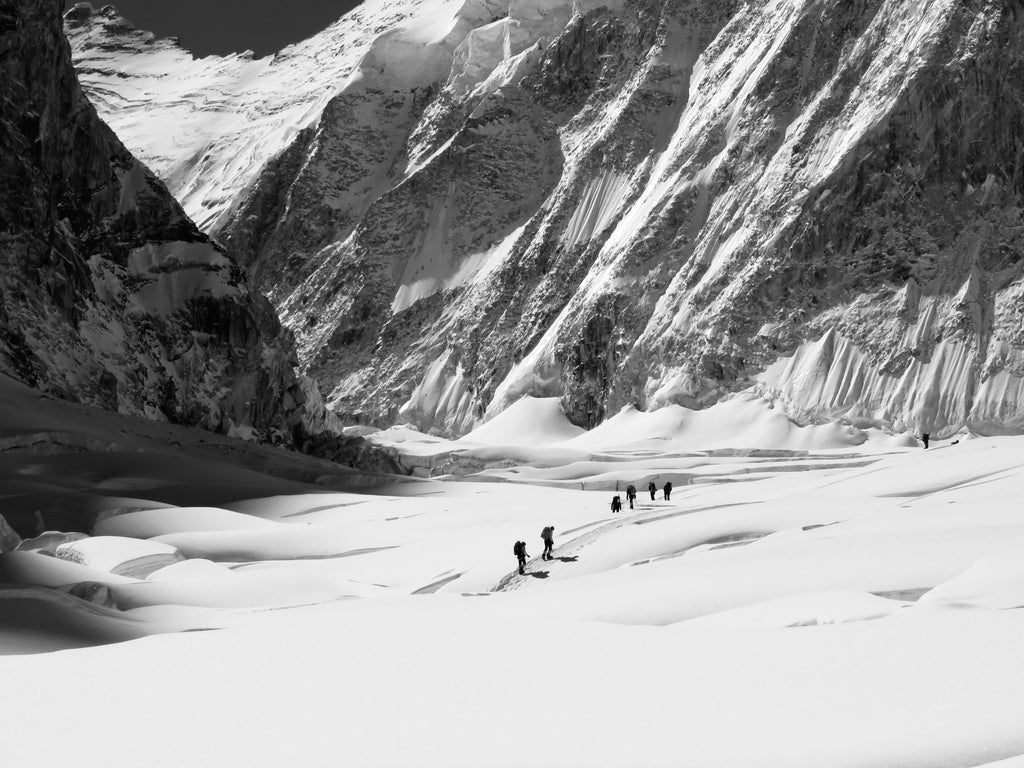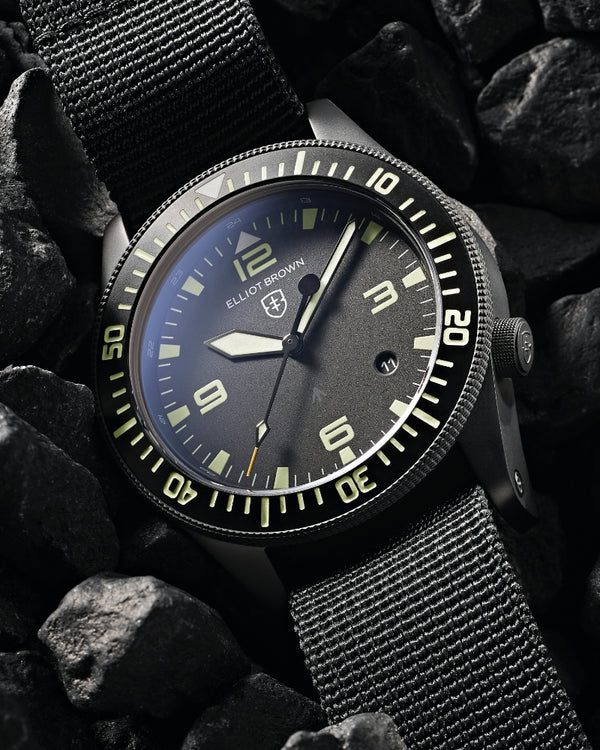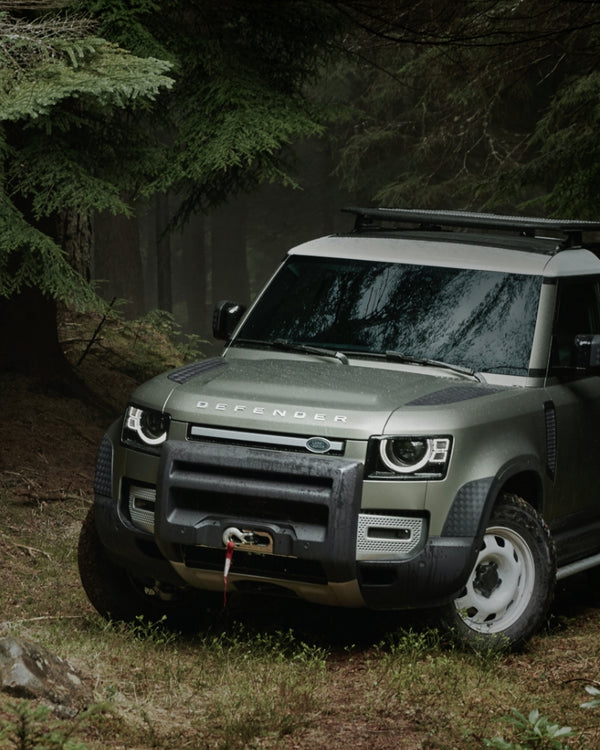Joe Winch Everest - The longest shadow

Despite being at an altitude of well over 8700 meters in strong wind and temperatures as low as -20 Celsius, Scott and I covered the last few meters to the summit together, arm-in-arm and shoulder-to-shoulder, and at 04:50 on the 21st of May 2019 we finally turned and embraced on the top of the world – unable to quite believe that we had actually made it.
Climbing Mount Everest is a remarkable achievement for anyone. But, climbing Mount Everest as part of my recovery from acute Complex-Post Traumatic Stress Disorder – when only two years prior the PTSD had destroyed everything about me and my world, causing significant neurological and physiological damage to my brain and body, and completely compromising my ability to understand or engage the world around me – that’s not just remarkable, its practically impossible.
Because although climbing equipment has undeniably improved during the 70 years people have been summiting Everest, the mountain is just as dangerous as it always has been – an avalanche or a fall is just as fatal as it always has been, exposed skin still freezes and dies in seconds when its below -20° Celsius, the sun will forever burn dreadfully and cause snow-blindness within a few hours if the skin or eyes are left unprotected on the snow above 6000 meters, and the brain can still swell and lungs fill with fluid exactly as they have always done, and always will do, at the most extreme altitudes.

The infamous Khumbu Icefall from Base Camp.
So Everest is undoubtedly amongst the most dangerous places on the planet – which makes it a somewhat unconventional place for a recovery from a life changing psychological injury.

The top of the Khumbu Icefall & gateway to Camp 1 and the awesome Western Cwm.
But this was a remarkable opportunity for me and my recovery, so I committed to the expedition – understanding well that the journey would be incredibly difficult, particularly with PTSD. Yet with all the noise and chaos of travelling through Kathmandu and the foothills of the Himalaya it turned out to be far more challenging than I had anticipated. Indeed, just two weeks into the two-month journey I was so exhausted and rundown that I developed a nasty chest infection that very nearly compromised my expedition. But with the support of my team, some good medication, and the stability I was able to create once we arrived at Base Camp – I started to recover, and by the end of April I was feeling much stronger, and by the middle of May I felt more than ready for the mountain.
And we were ready, as individuals and as a team – having done everything possible to prepare for Everest and its many extremes. We were all experienced mountaineers, who had climbed in the Alps repeatedly, and as a team we had successfully summited Denali together in the summer of 2018 – enduring temperatures well below -20° Celsius and one of the worst storms on the mountain in over a decade. Furthermore, we were all Royal Marines Commando’s – meaning that not only had we passed one of the toughest military courses in the UK, but also, to have passed this course, we had all had to demonstrate the utmost courage, determination, selflessness, and cheerfulness in the face of adversity.

Climbing the Western Cwm, with Everest left, Lhotse ahead, and Nuptse right.
Which meant that on the mountain, exactly as on the battle field, we could and would unhesitatingly go to the ends of the world for each other whenever and wherever required. To have such an absolute confidence in the people around you, in such dangerous circumstances, is really exceptional – but this is also precisely the privilege of being a Royal Marines Commando.
Finally setting off from Base Camp at 02:00 on the 17th May, we began climbing in relatively mild conditions under a near full moon, moving from 5400 meters across the Khumbu Glacier, ascending the Ice Fall, and then traversing the length of the Western Cwm – surely one of the natural wonders of the world and a place full of mountaineering history. Located at 6400 meters, teetering on the edge of the glacier and perilously close to a row of huge overhanging serac’s that were guarding the lower slopes of Everest, Camp Two is not a restful place. Yet, so far at least, the weather had been kind and arriving at 11:00 we had made good progress.
We rested on the 18th and set off for Camp Three at 08:00 on the 19th. Although another pleasant day with little wind, the climb from Camp Two to Three leads straight up the Lhotse Face – a 1,500-meter wall of steep sheer blue ice. For nearly four hours we kicked our crampons into solid ice before heaving ourselves up on the fixed lines to achieve another few feet of precious ascent. Despite being well acclimatised, here on the Lhotse Face the air was desperately thin and even the most subtle of moves left us gasping, slowing us to a crawl. Camp Three was very precariously cut out of the ice wall at 7300 meters – barely a third of the way up the Face. But here we were at least rewarded with the most spectacular views of the Western Cwm, Nuptse, Everest, and the Himalaya far below us to the West. This was also the highest we would go without supplemental oxygen – from this point on we would be climbing with oxygen bottles and masks, which was a great relief.

The view back down the Western Cwm from Camp 3 at 7300 meters on the Lhotse Face.
Waking at 04:00 on the 20th began one of the longest days of my life. We melted snow, drank, and ate for two hours before setting off in down suits, oxygen masks, and carrying our packs. As we climbed the route ahead became increasingly clear – up the rest of the Face to the South Col, beyond to the Balcony, and finally to the North Summit of Everest. With the objective in sight, and after a night on oxygen, my strength and confidence grew exponentially – this was my best day on the mountain. I was moving efficiently, easily passing traffic with my teammate Tom, and enjoying the views – which got more spectacular with every step. Eventually Tom and I traversed the top of the Lhotse Face to the Yellow Band and Geneva Spur – where we temporarily left the ice and found firmer footing on rock as we entered the South Col and Camp Four. The South Col is a desperately bleak area between the mighty peaks of Lhotse and Everest. Bleak because the wind tears through it, punishing anything and anyone that dares to stay there, and – at almost 8000 meters – life cannot be sustained here for more than a few days without supplemental oxygen – of which we had only a limited supply; so time was now particularly precious indeed.
We climbed into Camp Four at 13:00 and immediately set about eating and drinking – we were in hurry, not only because we were on borrowed time at 8000 meters, but also because within a few hours we were crawling back out of our tents, hauling on our gear, and beginning our final ascent. Yet being far colder and windier than normal this was no ordinary summit day. But as competent mountaineers, familiar with each other, extreme cold, and altitude, we took a calculated risk – deliberately choosing a more challenging summit day to avoid the very significant risk of crowding, which proved catastrophic for so many climbers this season. We left the South Col at 19:00 as the sun set, the wind picked up, and the temperature plummeted; the risk of the weather deteriorating further and leaving us dangerously exposed at the forefront of my mind.
When we reached the Balcony at 8400 meters it was bitterly cold, but the wind had eased, and with a full moon overhead the views across the Himalaya, even in the middle of night, were spectacular. Our team now found itself almost completely alone on the mountain, and as we pushed off the Balcony we broke down into pairs to move more efficiently over the more challenging ground ahead – I was climbing up front with my teammate Scott. The route suddenly and dramatically changed as we picked up a long and very exposed snow-covered ridge that represented the border between Chinese Tibet and Nepal, and which led us – eventually – all the way to the South Summit at 8700 meters.
On the way to the South Summit though I started to have serious problems with my oxygen flow, my feet became painfully cold, and the wind – which had started to relent – increased dramatically driving down the temperature. Then, Scott’s headtorch broke – which was a serious problem as Scott has only one eye and without a headtorch his depth perception and ability to move safely became especially precarious. We had also been climbing for nearly twenty-four hours, we hadn’t slept or eaten properly in three days, and our oxygen flow was now inconsistent. Hypoxia, exhaustion, and frost bite are amongst the greatest risks at extreme altitude – because they can quickly and easily combine to fatally compromise judgement and decision-making abilities. So, Scott and I slowed our ascent, shared our remaining headtorch, and really focussed on looking out for each other – whilst I also furiously worked on warming my feet and my oxygen flow.
As we got to the infamous Hillary Step – a difficult fifteen-foot section of rock, things started to improve though, and we were moving really efficiently as a pair
– the months of hard work training together paying off. Pushing on towards the final summit ridge the sun began to rise way off in the East over Chinese Tibet – creating a sensational sunrise that cast an incredible orange and blue glow over the whole Himalaya, and Mount Everest’s shadow – the longest shadow in the world – was thrown like a huge Pyramid over a waking Nepal to the West. The summit ridge that morning was absolutely exquisite – Scott and I we were utterly alone and, spurred on by a huge surge of adrenaline, we were climbing almost effortlessly towards the summit, climbing – that is – in the footsteps of so many mountaineering legends.
This was truly a magical moment and a magical place – a place I had dreamed off since I was a child, that had fascinated me for so many years, and which had utterly pre-occupied me, my family, and my team for the last two months.
Despite being at an altitude of well over 8700 meters in strong wind and temperatures as low as -20° Celsius, Scott and I covered the last few meters to the summit together, arm- in-arm and shoulder-to-shoulder, and at 04:50 on the 21st of May 2019 we finally turned and embraced on the top of the world – unable to quite believe that we had actually made it. Being on the summit of Everest was a most incredible feeling, full of emotion, relief, and pride. My journey to get here, the last two- months and the last two-years, had been so difficult that at times it seemed utterly impossible – yet here I was, standing tall and incredibly proud on the very top of the world.

Scott and the author on the top of the world, 04:50 on the 21st of May 2019.
This is the significance of my Everest journey, for against all the odds I overcame one of the worst psychological injuries of war to stand on the top of the world – it should have been impossible, but I did it. And in the process I had helped, I hope, to dramatically move the debate on mental health far beyond merely ‘raising awareness’
and ‘reducing the stigma’, to prove that PTSD and other life changing psychological injuries are not necessarily a death sentence, and can actually be the initiative for amazing change that leaves us emotionally, spiritually, and socially far better-off. This was the primary purpose and the ultimate driving force behind my Everest climb – which was all about changing perceptions and giving hope, faith, and reassurance to all those others battling with their minds.
In the mountains I feel so alive, my mind focused like nowhere else, all the noise and my symptoms and diagnosis disappearing and, instead, being replaced by an incredibly powerful sense of identity, belonging, and purpose. In stark contrast to normal life – in the mountains I know precisely who I am, where I am, and what I am doing; I am excited and optimistic; and I am ready – physically, emotionally, and mentally. But on Everest something even powerful and profound happened – my self- confidence and self-esteem, indeed my fundamental understanding of who, what, and where I am, with the dawning of the sun at the summit that morning – it all totally transformed for the better, leaving me stronger, happier, and more content than ever before.
To finish, I must emphasise that neither Everest nor my wider recovery has “cured” my PTSD – I still to struggle tremendously. But in many ways my journey has done something far better than just curing me – it has helped me create a new life, a life which is far happier, brighter, and less chaotic; where my priorities and interests are far clearer; where I am a better husband, father, and friend; and a future where I am, at last, coming to peace with myself and the world around me. So I am no victim, in many ways – I am still standing proudly on the top of the world, and I always will be – wherever I am, whatever I am doing, because that’s who I am, Joe Winch, proud husband, father, mountaineering team member, Royal Marines Commando, and Everest summiteer.

The author celebrating on Everest's summit!
















